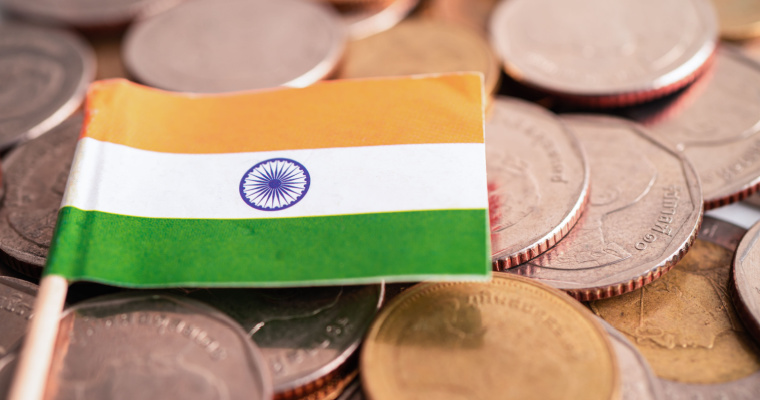What are the Sources of Public Revenue for Government? – Major Tax and Non-tax Sources

The government undertakes many initiatives and projects aimed at economic growth and progress. This includes activities such as developing infrastructure, extending healthcare facilities and ensuring access to education to all children.
To finance all of these expenditures and more, the government requires funds – which it earns through various sources of public revenue. Let us understand what public revenue is and where it comes from.
What is Public Revenue?
Simply put, public revenue is the income that the government earns.
A significant chunk of the public revenue goes towards providing healthcare, education, welfare schemes, and also towards the defence services. In addition, public revenue is also used to meet the interest payments that the government makes to its lenders.
In all, earning public revenue enables the government to fulfil its economic and social objectives. There are various sources of public revenue for the government to make its earnings. Let us explore some in detail.
What are the Major Sources of Public Revenue for the Government?
The government primarily earns its revenue in two broad categories. One category is taxes. This includes the direct and indirect taxes levied on citizens and businesses in the country. Direct tax is the tax levied on the direct income of citizens, including companies and businesses in India. Indirect taxes are the ones that are imposed on goods and services purchased by citizens and companies.
Thus, the main sources of government revenue are:
1. Taxes
This includes direct as well as indirect taxes
2. Non-tax Sources of Revenue
These include other sources of income, such as fees, penalties, gifts, donations, profits of public enterprises, forfeitures, and more.
Let us now delve into these a bit more.
1. Taxes
As mentioned above, there are two components – direct taxes levied on the direct income and indirect taxes levied on the goods and services consumed. According to the recent Union Budget, it is estimated that in the financial year 2023, direct taxes accounted for 51.5%, and indirect taxes made up 48.5% of the total tax collected in India by the central government. The following are tax sources of revenue for the government. These are as follows
1. Direct Tax
Direct tax is the tax levied on the income and properties of individuals, corporations, HUFs, and other businesses. This includes income tax, land tax, property tax, wealth tax, etc. Income tax is a portion taken from the individual’s salary or, if it’s a business, its profits and gains. It is a progressive tax, implying that you pay a higher amount as you earn a higher income. You cannot shift the burden of this tax onto any other party.
India operates on a slab system to define the tax rate applicable to you based on your income. The Union Budget 2020 introduced a new tax regime with a greater number of tax slabs and a higher exemption limit. However, it has done away with many deductions and exemptions provided under the old regime. Presently, a citizen may choose which tax regime they want to follow when filing for income tax, though the new regime will be considered the default system.
Additionally, the government levies property tax on real estate assets that you own. Residential property and commercial property are taxed differently and you are bound to declare and pay, irrespective of whether it has been let out or not. Moreover, you are also liable to pay direct tax on the long-term and short-term capital gains you make from realising (selling/redeeming) your investments.
All of these add to the government coffers, serving as one of the most crucial sources of public revenue.
2. Indirect Tax
Indirect taxes are charged on the sale or consumption of goods and services. Unlike in the case of direct taxes, the burden of payment of indirect taxes can be transferred to another entity. In general, these taxes are imposed on the suppliers of goods or services. However, the suppliers may pass it on to their end consumers as part of the price of the goods and services offered.
Earlier, several indirect taxes were charged in India by the central government as well as state governments. These included Value Added Tax (VAT), service tax, entertainment tax, sales tax, excise duty, and customs duty, to name a few. In July 2017, the government announced bringing the whole nation under a single indirect tax regime with the implementation of the Goods and Services Tax (GST). This is still a work-in-progress as there are still a few cases where other indirect taxes apply. For example, VAT is charged on alcohol used for human consumption.
GST is being presented as a destination-based tax that is charged when the services or goods are finally consumed. This has removed the cascading effect of taxes in the supply chain and has become one of the largest sources of government revenue.
Also Read
2. Non-Tax Source of Revenue
There are many non-tax sources of revenue for the government. These are as follows:
1. Fees
Fees are charged and become payable whenever you avail any service rendered by the government. This includes education fees, fees paid to get certain certificates and licenses, property registration fees, business registration fees, etc.
2. Fines and Penalties
Fines and penalties are levied on those who break the country’s laws and rules. For example, tax evasion attracts severe penalties from the government. Violation of environmental laws or corporate governance laws is punishable with fines in addition to jail term. At a simpler level, you are bound to pay a fine if you jump a red light or break a traffic rule. Note that the idea behind fines and penalties is not to generate government revenue but to enforce law and order in the country by punishing those who do not follow it.
3. Gifts, Grants and Donations
The government often receives gifts and donations from the citizens of the country and that serves as one of the sources of public revenue. The government may also receive grants from other countries’ governments or institutions set up to aid countries, such as the United Nations. But, these forms of government revenue sources are not recurring and cannot entirely be relied upon.
4. Special Evaluation
Special evaluation or assessment is the payment made by property owners in a particular locality in exchange for some special facilities extended to them by the government. For example, local bodies can levy a charge against water supply to the area, or for providing underground drainage pipe system to a gated community, etc.
5. Public Companies Surplus
The government owns and operates many public companies that offer services to the citizens of the country. The profits generated by them serve as one of the most important Indian government revenue sources and are termed as economic income. Some examples of public companies are the State Bank of India, ONGC, and Power Finance Corporation.
6. Forfeitures
This is one of the minor non-tax sources of revenue for the government in India. Revenue from forfeitures is generated when an asset or security deposit is forfeited. Forfeiture also occurs on non-performance of a contract by any of the parties that signed on it.
7. Funds Borrowed
The government can borrow funds from foreign countries, citizens, or international organisations such as the World Bank and International Monetary Fund. This helps the government meet its expenses.
8. ESCHEAT
If a person passes away and has no successor or legal heir who can take over his or her property, it is taken over by the government. Such revenue is termed Escheat and is only a minor income source.
9. Liquor Charges
Liquor is a huge source of revenue for the central government as well as the state government. This is because states levy excise duty on sales as well as the manufacture of liquor. Some states, such as Tamil Nadu, also impose VAT on alcohol. Other charges levied by states also include special fees on foreign liquor that have been imported, fees on its transportation, and also for registration of the brand and label.
Final Word
There are various sources of public revenue through which the government funds its expenses. There are two primary sources of this – tax and non-tax revenue. Tax revenue includes direct and indirect taxes, while fees, penalties, donations, grants, and more come under non-tax sources. Public revenue helps the government achieve the economic and social goals it has set.
However, if you want to maximise tax savings while investing in India’s top 50 companies in a highly cost-effective manner, you may consider Navi ELSS Tax-Saver Nifty 50 Index Fund.
Disclaimer: Mutual fund investments are subject to market risks, read all offer documents carefully
FAQs
Public revenue is the income of the government from all sources. The government uses public revenue to meet its expenses incurred to meet its objectives.
The two main ways through which the government earns revenue can be classified as tax and non-tax sources. Tax includes direct and indirect taxes, and non-tax sources of revenue include fees, donations, grants, penalties, etc.
Escheat is the revenue earned by the government when it takes over the property of a person who has passed away and has no successor or legal heir.
Direct tax is the tax levied on the income and property of individuals, HUFs, corporates, and other businesses in the country. It is a major source of Government revenue.
The main indirect tax applicable throughout India is the Goods and Service Tax (GST). Apart from this, other taxes such as customs duty, excise tax, and value added tax are also applicable in certain cases.

Customer’s Feedback
No comments found.What is Form 26QB for TDS? How to Download and Submit it?
While purchasing a property, buyers are liable to pay various taxes. The Finance Act, 2013 made TDS... Read More »PF Withdrawal Rules 2023 – Rules, Documents Required and Types
EPF/PF Withdrawal Employees’ Provident Fund (abbreviated as EPF) is a popular retirement sav... Read More »Stamp Duty and Property Registration Charges in Delhi 2023
It is compulsory for property buyers in the Capital to pay stamp duty in Delhi during property regi... Read More »Income Tax Return – Documents, Forms and How to File ITR Online AY 2023-24
In India, it is mandatory for all taxpayers who earn more than the basic tax exemption limit to fil... Read More »What is Section 80CCD – Deductions for National Pension Scheme and Atal Pension Yojana
The Income Tax Act provides a number of deductions and tax benefits to taxpayers, so they can strat... Read More »Tax on Dividend Income: Sources, Tax Rate and TDS on dividend income
What are Dividends? Companies may raise funds for running their operations by selling equity. Th... Read More »Section 112A of Income Tax Act: Taxation on Long-Term Capital Gains
What is Section 112A? Section 112A of the Income Tax Act was announced in Budget 2018 to replace... Read More »Section 206AB of Income Tax Act: Eligibility And TDS Rate
Section 206AB was introduced in the Finance Bill 2021 as a new provision pertaining to higher deduc... Read More »What is a Credit Note in GST – Example, Format and Steps
A GST Credit Note is mandatory for any GST-registered supplier of goods or services. As a supplier,... Read More »Exemptions and Deductions Under Section 10 of Income Tax Act
What Is Section 10 of the Income Tax Act? Section 10 of the Income Tax Act, 1961 provides tax-sa... Read More »Section 57 of the Income-tax Act – Income from Other Sources
It is quite likely that many entities - individuals as well as businesses - have multiple sources o... Read More »What is Dearness Allowance? – Types, Calculation, and Current Rate
What is Dearness Allowance? Dearness Allowance Meaning - Dearness Allowance (DA) is an allowance... Read More »Top 10 Chit Fund Schemes in India in 2023
Chit funds are one of the most popular return-generating saving schemes in India. It is a financial... Read More »10 Best Gold ETFs in India to Invest in April 2023
Gold ETFs or Gold Exchange Traded Funds are passively managed funds that track the price of physica... Read More »10 Best Demat Accounts in India for Beginners in 2023
Creation of Demat accounts revolutionised the way trades were conducted at the stock exchanges. It... Read More »20 Best Index Funds to Invest in India in April 2023
What is an Index Fund? An index fund is a type of mutual fund or exchange-traded fund (ETF) that... Read More »Best Arbitrage Mutual Funds to Invest in India in April 2023
Arbitrage funds are hybrid mutual fund schemes that aim to make low-risk profits by buying and sell... Read More »10 Best SIP Plans in India to Invest in April 2023
What is SIP? SIP or Systematic Investment Plan is a method of investing a fixed amount in ... Read More »10 Best Corporate Bond Funds in India to Invest in April 2023
Corporate bond funds are debt funds that invest at least 80% of the investment corpus in companies ... Read More »10 Best Bank for Savings Account in India [Highest Interest Rate 2023]
Savings account is a type of financial instrument offered by several banks. It lets you safely depo... Read More »






















